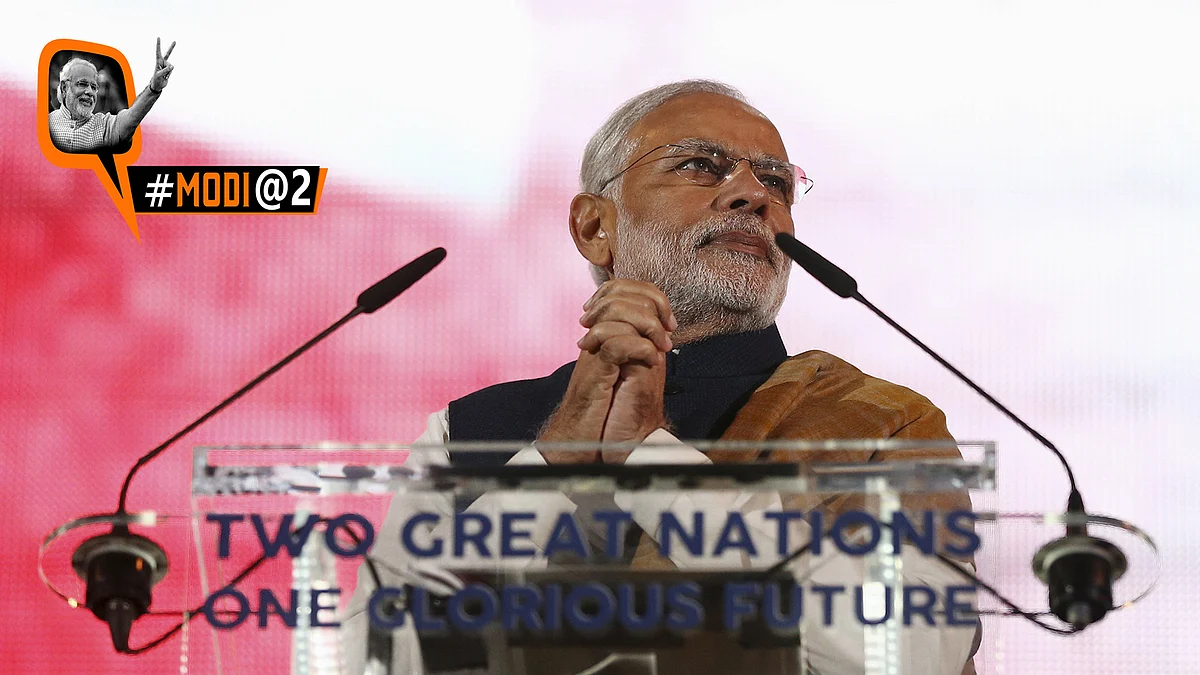Modi@2: We’re Not Hopeful About Modi, Writes a Kashmiri Student
The strife-torn state has seen regimes emerge and fall, but they’ve failed to win the confidence of Kashmiri people.

advertisement
Narendra Modi, India’s Hindutva ideologue, has completed two years as the Prime Minister. That’s long enough to judge a politician’s caliber and motives. Most states in India may have already concluded what the Modi-led regime is up to, but Jammu & Kashmir is a different ballgame altogether.
Here, politics is topsy-turvy, and people’s demands from their governments are different than other states. Naturally, the central government takes a different approach when dealing with India’s northernmost state.
- In Kashmir politics is topsy-turvy, and people’s demands from their governments are different than other states.
- Kashmiri youth crave for a space where they can express their political aspirations and be agents of change.
- There has been no respite from the earlier regime’s muzzling of dissenting voices.
- Peace in Kashmir remains elusive.
A large chunk of intellectuals in India believe that to win Kashmir’s confidence, India must ‘win the hearts of its people’. The strife-torn state has seen many regimes rise and fall, but all of them have failed to win the confidence of Kashmiri people.
At the outset of Modi’s regime, even skeptical Kashmiris expected some kind of change in the status quo that existed in the state for over a decade. Change, any change – its nature didn’t matter. But sadly, Modi has failed to be different from his predecessors.
Kashmir’s youth have witnessed tremendous violence, and they need to be dealt with care. The youth crave for a space where they can express their political aspirations and be agents of change.
Whatever little hope people had in Modi was extinguished as soon as he assumed office.
The unabated killings, detention, abduction and mistreatment of young people at the hands of ‘security forces’ has pushed the state into further darkness. There has been no respite from the earlier regime’s muzzling of dissenting voices.
It was known from the outset that once the BJP came to power at the Centre, the pro-freedom voices in Kashmir would be choked. That is exactly what Modi has done. However, he completely miscalculated the sentiments that were brewing among the Valley’s youth. This is evident from the rising number of fresh recruits among militant groups and the weekly protests in the old city of Srinagar and other parts of the Valley.
The youth comprise a major part of the Valley’s population. They decide the general perception and the mood in the Valley. To alienate them would mean losing the already dwindling confidence of the Valley.
In today’s digital world, Kashmir’s youth are subjected to internet blockades for days together. This has reinforced their belief that their attachment with the Indian state is a coercive one. And then the reasons for these blockade and other curbs are grim reminders that India has been using force to maintain its occupation in Kashmir – something the people here detest.
Last year when the internet was blocked for three days, Kashmir suffered losses worth Rs 30-40 crore. Call centres operating in Kashmir were rendered useless. Hotels and ticket bookings suffered immensely. That only angered the people further.
After the September 2014 floods in Kashmir, the state suffered losses of over Rs 1 trillion. One year later, people are still waiting for the promised relief.
According to reports, the housing sector suffered losses of over Rs 30,000 crore while the business sector incurred losses worth over Rs 70,000 crore. Modi only allocated a Rs 80,000 crore package for the people of Jammu and Kashmir, which wasn’t nearly enough. The business fraternity in Kashmir rejected it, saying it was merely an eyewash.
A major chunk of the package, about Rs 42,000 crore, had been earmarked for a national highway project. This money will go to the central agency, as it is for the roads and National Highway Projects. The money will not go to the state government.
As such, the question one wants to ask is whether Modi’s approach towards Kashmir is because it is a state with a Muslim majority. And when a Hindutva ideologue is at the helm, shouldn’t the indifference towards the Muslims of Kashmir – those who are often branded as trouble-mongers and pro-Pakistan agents – be obvious?
Two years of Modi have helped the youth of Kashmir recognise the BJP’s agenda. Their intentions have become clearer– the provocative setting up of Sainik Colonies, separate townships for migrant Kashmiri Pandits and shelters for non-local workers and beggars in Kashmir are all politically motivated. All these steps are efforts to abrogate the state’s special status, which the BJP has been adamantly trying to do away with from the first day of their rule.
Peace in Kashmir remains elusive. The frequent gun-battles and anti-India protests are a clear message that Kashmir is a disputed land. The conflict must be resolved at a priority basis with all the stake holders – Kashmiris particularly – on board. The promises of governments at the centre have always been proven fallacious and the Modi government has been no exception.
Kashmir isn’t hopeful about Modi.